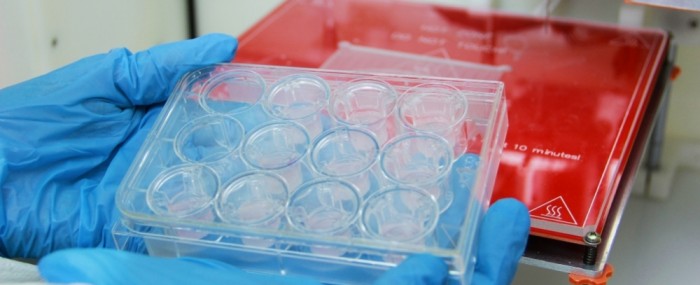
Startup develops artificial tissue with vascularization
07 de dezembro de 2021FAPESP Innovative R&D * – 3DBS (3D Biotechnology Solutions), a startup based in Campinas (São Paulo state, Brazil) and supported by FAPESP’s Innovative Research in Small Business Program (PIPE), is developing technology to print vascularized artificial tissue for applications such as reproduction of bioprinted organs using cells from the recipient.
Incubated at Mandic Hub, the innovation center run by São Leopoldo Mandic Medical and Dental School (SLMandic), 3DBS is well-known for being the first Brazilian company to bring biofabrication equipment to market. The technology can be used to automate the production of artificial skin for research and testing in the cosmetics and pharmaceutical industries.
“Vascularized artificial skin will be disruptive and important to a range of healthcare applications, from treatments to bioprinted organ transplants,” says Pedro Massaguer, CEO of 3DBS.
According to Ana Luiza Millás, head of research at 3DBS, the race is on worldwide to develop viable vascularized artificial organs. “Skin must always contain blood vessels, and our main aim in the field of biofabrication is to mimic human tissue,” she says. “It needs to be irrigated with oxygen and nutrients via microvessel transport.”
The solution will help eliminate animal testing by enhancing the technology used for testing in the cosmetics and pharmaceutical industries, she adds, as well as contributing to the development of more effective treatments of wounds and burns, since vascularization improves tissue regeneration.
Vascularization method
According to Millás, the development of vascularized tissue at 3DBS began with production of artificial skin by the startup. She conducted postdoctoral research at the University of São Paulo’s School of Pharmaceutical Sciences (FCF-USP) under the supervision of Professor Sylvia Stuchi Maria-Engler, recognized as one of Brazil’s leading authorities on skin biology.
The firm’s existing artificial skin is not vascularized but is already used for safety and efficacy trials by cosmetics companies such as Natura, as an alternative to animal testing, and has been evaluated in advanced pre-clinical trials for use in grafts and biodressings.
“In the case of bioprinted vascularized skin, we’ve reached the prototype stage,” Millás explains. “Here we use young human cells from prepuce tissue donated by patients [operated on for phimosis] in compliance with the rules imposed by SLMandic’s Ethics Committee. We extract the cells in our laboratory. They’re mostly melanocytes, keratinocytes, fibroblasts [to give rise to skin] and endothelial cells [to create blood vessels]. This tissue would normally be discarded.”
The key difference in 3DBS’s solution is that after extracting and growing the cells in the laboratory, its scientists use an automated 3D bioprinting (additive manufacturing) platform for living materials built by 3DBS, with bioink produced from the cells. The projects were supported FAPESP via the PIPE program.
“We’re automating the production of these tissues to achieve scalability and reproducibility, and also to permit customization,” Millás says.
More than 50 Brazilian groups are using 3DBS’s technology, she notes, in public and private universities and research institutions. “This shows how 3DBS is democratizing and stimulating the development of biofabrication in Brazil by providing equipment, training and consulting,” she says. “So far, we’ve developed five bioprinter models and three electrospinning machines. We’ve also developed in-house biomimetic human tissue using our own technology.”
*With information from Mandic Hub’s Press Office
